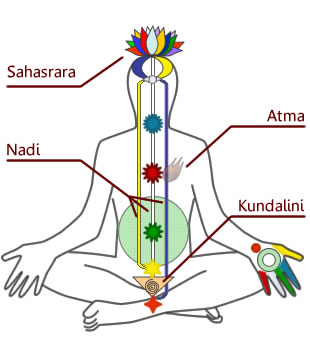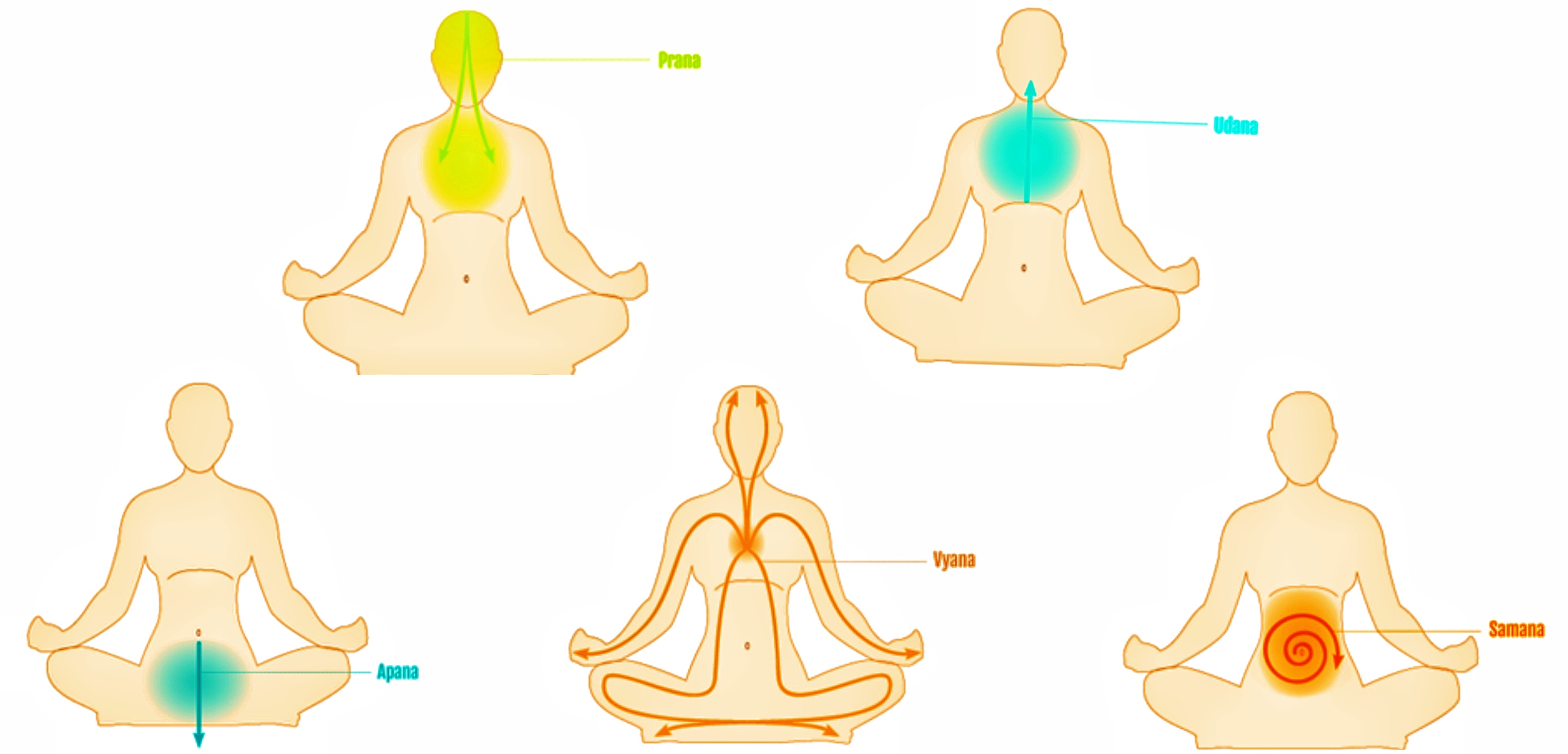|
Sahasrara
Sahasrara ( sa, सहस्रार, IAST: , en, "thousand-petalled", with many alternative names and spellings) or the crown chakra is considered the seventh primary chakra in some yoga traditions. Hatha yoga The Sahasrara is described in a few medieval hatha yoga texts including the '' Śivasaṃhitā'' and the '' Tirumantiram'', but not within the Paścimāmnāya and Nath traditions; the ''Kubjikamatatantra'' describes only the six lower chakras. The scriptures vary in the position of the Sahasrara; the ''Siva Samhita'' states that it is beyond the body, whereas others place it at the fontanelle or brahmarandhra on the top of the head where the soul leaves the body at death. Description The Sahasrara is described as a lotus flower with 1,000 petals of different colors. These are arranged in 20 layers, each with approximately 50 petals. The pericarp is golden and within it a circular moon region is inscribed with a luminous triangle, which can be either upward- or d ... [...More Info...] [...Related Items...] OR: [Wikipedia] [Google] [Baidu] |
Ayyavali Sahasrara
Ayyavazhi ( ta, அய்யாவழி, ml, അയ്യാവഴി ''Ayyāvaḻi'' , ) is a henotheistic belief that originated in South India.Tha. Krishna Nathan, ''Ayyaa vaikuNdarin vaazvum sinthanaiyum'', p. 62: "" (The day at which Vaikundar is given rebirth could be considered as the date of origin of the Ayyavazhi religion.) Though generally regarded as a branch of Hinduism, it is cited as an independent monistic belief by several newspapers, government reports, and academic researchers.Graham Harvey and Robert J. Wallis, (2007), ''Historical Dictionary of Shamanism'', , Scarecrow Press, pp. 101 Ayyavazhi is centered on the life and preachings of Ayya Vaikundar; its ideas and philosophy are based on the holy texts '' Akilathirattu Ammanai'' and '' Arul Nool''. Accordingly, Ayya Vaikundar was the Purna avatar of Narayana. Ayyavazhi shares many ideas with Hinduism in its beliefs and practice, but differs considerably in its concepts of good and evil and dharma. Ayyava ... [...More Info...] [...Related Items...] OR: [Wikipedia] [Google] [Baidu] |
Chakra
Chakras (, ; sa , text=चक्र , translit=cakra , translit-std=IAST , lit=wheel, circle; pi, cakka) are various focal points used in a variety of ancient meditation practices, collectively denominated as Tantra, or the esoteric or inner traditions of Hinduism.Chakra: Religion Encyclopaedia Britannica The concept of the chakra arose in the early traditions of . Beliefs differ between the Indian religions, with many Buddhist texts consistently mentioning five chakras, while Hindu sources reference six or seven. Early ... [...More Info...] [...Related Items...] OR: [Wikipedia] [Google] [Baidu] |
Kundalini
In Hinduism, Kundalini ( sa, कुण्डलिनी, translit=kuṇḍalinī, translit-std=IAST, lit=coiled snake, ) is a form of divine feminine Energy (esotericism), energy (or ''Shakti'') believed to be located at the base of the spine, in the ''Muladhara (Root Chakra), muladhara''. It is an important concept in Shaivism#Grihastha and Sannyasi Shaiva: Mantramarga, Śhaiva Tantra, where it is believed to be a force or power associated with the Devi, divine feminine or the formless aspect of the Goddess. This energy in the body, when cultivated and awakened through Tantra, tantric practice, is believed to lead to Moksha, spiritual liberation. Kuṇḍalinī is associated with Parvati or Adi Parashakti, the supreme being in Shaktism; and with the goddesses Bhairavi and Kubjika. The term, along with practices associated with it, was adopted into Hatha yoga in the 9th century. It has since then been adopted into other forms of Hinduism as well as modern spirituality and New A ... [...More Info...] [...Related Items...] OR: [Wikipedia] [Google] [Baidu] |
Kundalini Energy
In Hinduism, Kundalini ( sa, कुण्डलिनी, translit=kuṇḍalinī, translit-std=IAST, lit=coiled snake, ) is a form of divine feminine energy (or ''Shakti'') believed to be located at the base of the spine, in the '' muladhara''. It is an important concept in Śhaiva Tantra, where it is believed to be a force or power associated with the divine feminine or the formless aspect of the Goddess. This energy in the body, when cultivated and awakened through tantric practice, is believed to lead to spiritual liberation. Kuṇḍalinī is associated with Parvati or Adi Parashakti, the supreme being in Shaktism; and with the goddesses Bhairavi and Kubjika. The term, along with practices associated with it, was adopted into Hatha yoga in the 9th century. It has since then been adopted into other forms of Hinduism as well as modern spirituality and New age thought. Kuṇḍalinī awakenings are said to occur by a variety of methods. Many systems of yoga focus on awak ... [...More Info...] [...Related Items...] OR: [Wikipedia] [Google] [Baidu] |
Vritti
Vritti (Vrutti) (Sanskrit: वृत्ति, Harvard-Kyoto: vṛtti, Gujarati: વૃત્તિ), means "streams of consciousness",it is also a technical term used in yoga meant to indicate mental awareness against disturbances in the medium of consciousness. Vritti can be taken as a catch-all term for any content in consciousness, where consciousness is regarded as a medium or container for any possible mental content. The scope of the idea is very broad, referring not only to thoughts and perceptions experienced in a normal waking state, but also to all super-physical perceptions, such as dreams or in any altered state of consciousness. Vritti has also been translated as "waves" or "ripples" of disturbance upon the otherwise calm waters of the mind. The classical definition of yoga as stated in the Yoga Sutras is to calm the waves and return, or reunite (yoga = union) mind to its calm state, or samadhi. Usage in yoga The concept of vritti is central to the main definition ... [...More Info...] [...Related Items...] OR: [Wikipedia] [Google] [Baidu] |
Ajna
Ajna ( sa, आज्ञा, IAST: , ), brow or third eye chakra, is the sixth primary chakra in the body according to Hindu tradition and signifies the unconscious mind, the direct link to Brahman (ultimate reality). The third eye is said to connect people to their intuition, give them the ability to communicate with the world, or help them receive messages from the past and the future. Location The Ajna chakra is located in the center of the forehead between the eyebrows. It is not a part of the physical body but considered to be the part of pranic system. The location makes it a sacred spot where Hindus apply a tilak bindi to show reverence for it. Appearance The Ajna chakra is described as "a diamond-like lotus of two petals, presided by Hamsa Devata, and Susumna Sakti. It corresponds to the Vijñāna state and Anupama Vak, and to the half matra of the Pranava." It is said to represent the nadis (psychic channels) Ida and Pingala, which meet the central Su ... [...More Info...] [...Related Items...] OR: [Wikipedia] [Google] [Baidu] |
Shirshasana
Shirshasana (Sanskrit: शीर्षासन, IAST: śīrṣāsana) Salamba Shirshasana, or Yoga Headstand is an inverted asana in modern yoga as exercise; it was described as both an asana and a mudra in classical hatha yoga, under different names. It has been called the king of all asanas. Its many variations can be combined into Mandalasana, in which the legs are progressively swept from one variation to the next in a full circle around the body. Etymology and origins The name Salamba Shirshasana comes from the Sanskrit words सालम्ब ''Sālamba'' meaning "supported", शीर्ष, ''Śīrṣa'' meaning "head", and आसन, ''Āsana'' meaning "posture" or "seat". The name ''Śīrṣāsana'' is relatively recent; the pose itself is much older, but had other names and purposes. Like other inversions, it was practised as Viparita Karani, described as a mudra in the 15th century ''Hatha Yoga Pradipika'' and other classical texts on haṭha yoga. Viparita Karan ... [...More Info...] [...Related Items...] OR: [Wikipedia] [Google] [Baidu] |
Nadi (yoga)
( sa, नाडी, lit=tube, pipe, nerve, blood vessel, pulse) is a term for the channels through which, in traditional Indian medicine and spiritual theory, the energies such as prana of the physical body, the subtle body and the causal body are said to flow. Within this philosophical framework, the nadis are said to connect at special points of intensity, the chakras. All nadis are said to originate from one of two centres; the heart and the ''kanda'', the latter being an egg-shaped bulb in the pelvic area, just below the navel. The three principal nadis run from the base of the spine to the head, and are the ida on the left, the sushumna in the centre, and the pingala on the right. Ultimately the goal is to unblock these nadis to bring liberation. Overview Nadi is an important concept in Hindu philosophy, mentioned and described in the sources, some as much as 3,000 years old. The number of nadis of the human body is claimed to be up to hundreds-of-thousands and even ... [...More Info...] [...Related Items...] OR: [Wikipedia] [Google] [Baidu] |
Manas (early Buddhism)
''Manas'' (Pali: मनस्) is one of three overlapping terms used in the nikayas to refer to the mind, the others being ''citta'' and '' viññāṇa''. Comparison with ''citta'' and ''viññāṇa'' ''Manas'', ''citta'', and ''viññāṇa'' are each sometimes used in the generic and non-technical sense of "mind" in general, and the three are sometimes used in sequence to refer to one's mental processes as a whole. Their primary uses are, however, distinct. In the distinction of Abhidhamma Pitaka of Theravada Buddhism, mana or mano is sort of the notion of mind as a whole, whereas a citta is each of instant steps or processes of mind, and viññāṇa is one of the several forms of citta, also being a step of a vithi or mental procedure, which is an orderly sequence of citta. Relationship with thinking and volition Manas often indicates the general thinking faculty. Thinking is closely associated with volitions, because mental activity is one of the ways that volitio ... [...More Info...] [...Related Items...] OR: [Wikipedia] [Google] [Baidu] |
IAST
The International Alphabet of Sanskrit Transliteration (IAST) is a transliteration scheme that allows the lossless romanisation of Indic scripts as employed by Sanskrit and related Indic languages. It is based on a scheme that emerged during the nineteenth century from suggestions by Charles Trevelyan, William Jones, Monier Monier-Williams and other scholars, and formalised by the Transliteration Committee of the Geneva Oriental Congress, in September 1894. IAST makes it possible for the reader to read the Indic text unambiguously, exactly as if it were in the original Indic script. It is this faithfulness to the original scripts that accounts for its continuing popularity amongst scholars. Usage Scholars commonly use IAST in publications that cite textual material in Sanskrit, Pāḷi and other classical Indian languages. IAST is also used for major e-text repositories such as SARIT, Muktabodha, GRETIL, and sanskritdocuments.org. The IAST scheme represents more than ... [...More Info...] [...Related Items...] OR: [Wikipedia] [Google] [Baidu] |
Prana
In yoga, Indian medicine and Indian martial arts, prana ( sa2, प्राण, ; the Sanskrit word for breath, " life force", or "vital principle") permeates reality on all levels including inanimate objects. In Hindu literature, prāṇa is sometimes described as originating from the Sun and connecting the elements. Five types of prāṇa, collectively known as the five '' vāyus'' ("winds"), are described in Hindu texts. Ayurveda, tantra and Tibetan medicine all describe ''prāṇa vāyu'' as the basic vāyu from which the other vāyus arise. Prana is divided into ten main functions: The five Pranas – Prana, Apana, Udana, Vyana and Samana – and the five Upa-Pranas – Naga, Kurma, Devadatta, Krikala and Dhananjaya. Pranayama, one of the eight limbs of yoga, is intended to expand prana. Etymology V. S. Apte provides fourteen different meanings for the Sanskrit word ' () including breath or respiration; the breath of life, vital air, principle of life (usually pl ... [...More Info...] [...Related Items...] OR: [Wikipedia] [Google] [Baidu] |

.jpg)



.jpg)

